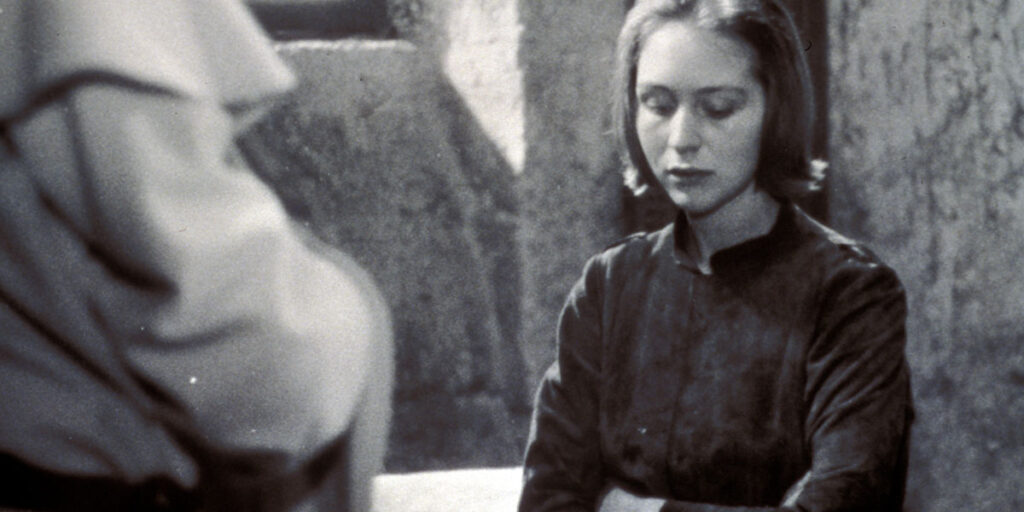
Robert Bresson’s 1962 version of this famous historical event, based entirely on the minutes from the trial, provides a claustrophobic, reverent, and surprisingly brisk walk through significant moments in Joan’s final days. Clocking in at a mere sixty-one minutes, Bresson’s frequent cuts make the film feel even faster than it is. Constantly the camera cuts away from Joan to those scrutinizing her, and then back again. Some look upon her with sympathetic eyes, though most express little beyond disdain for her.
Joan was tried by an ecclesiastical court, headed by the Bishop of Beauvais, Pierre Cauchon. And while theological questions dominate the trial scenes, there was more in play than a simple theological dispute. Joan, having been involved in what amounts to a civil war in fifteenth-century France, had been captured by the Burgundians and sold to their English allies. It was under these inauspicious political circumstances that the theological trial was conducted. Bresson cleverly highlights the political nature of the trial with brief scenes of conversation before and after the day’s proceedings or in and around Joan’s cell. That said, the bulk of the film’s action takes place in the courtroom—a theologically driven question and answer session between judges and accused that sees Joan fielding questions from at least three different men who often attempt to trip her up with their adroit queries.
The film illustrates typical Bressonian style. The actors don’t emote. Sound, especially of chains, is foregrounded. The film falls into a meditative cadence, rhythmically moving between trial and cell. And the camera often focuses on bodies rather than faces. This last point is no clearer than in the strong visual contrasts of feet. Most of the film pictures Joan’s feet shackled, often to her bed in her room. But after the authorities condemn Joan and lead her to the stake, Bresson turns his camera toward the ground. Her feet, though naked and accompanied only by a dangling cross, are free as they move toward impending death. There is courage in those bare feet, courage that evokes the one to whom she has pledged her life, the one to whom she entrusts herself. — John Adair (2010)
Arts & Faith Lists: